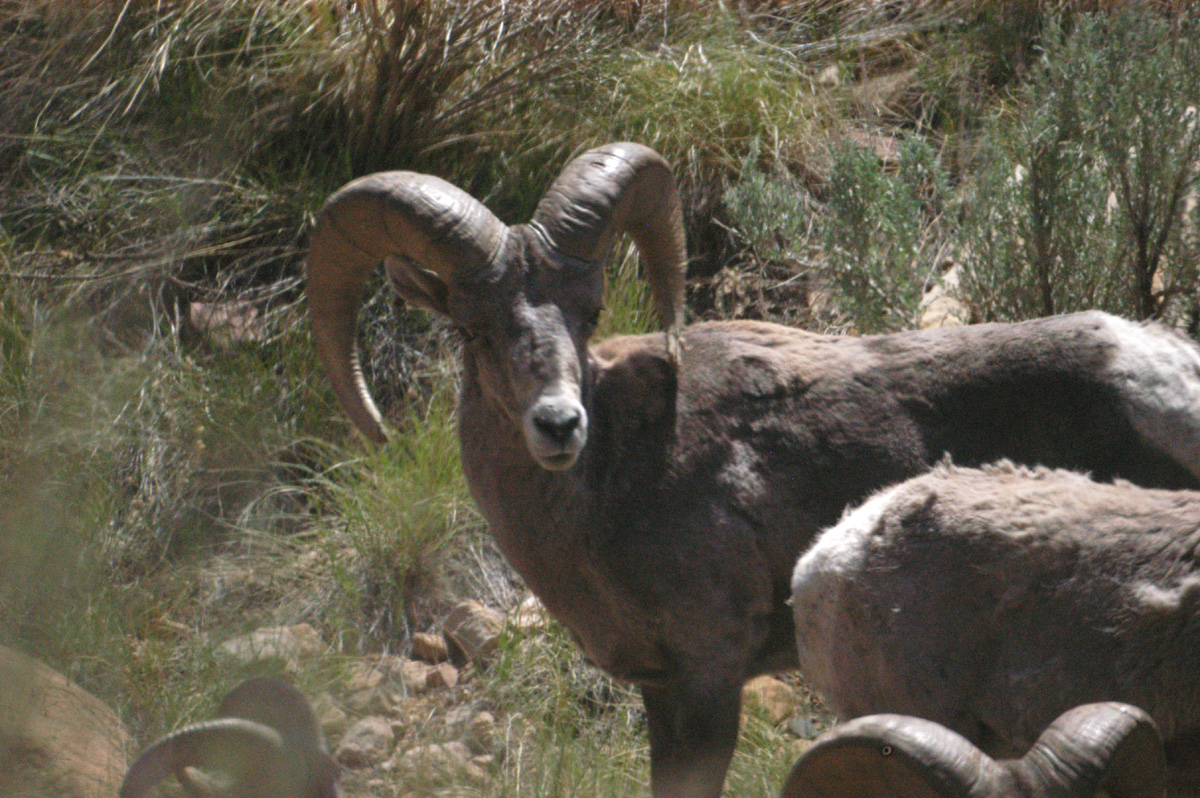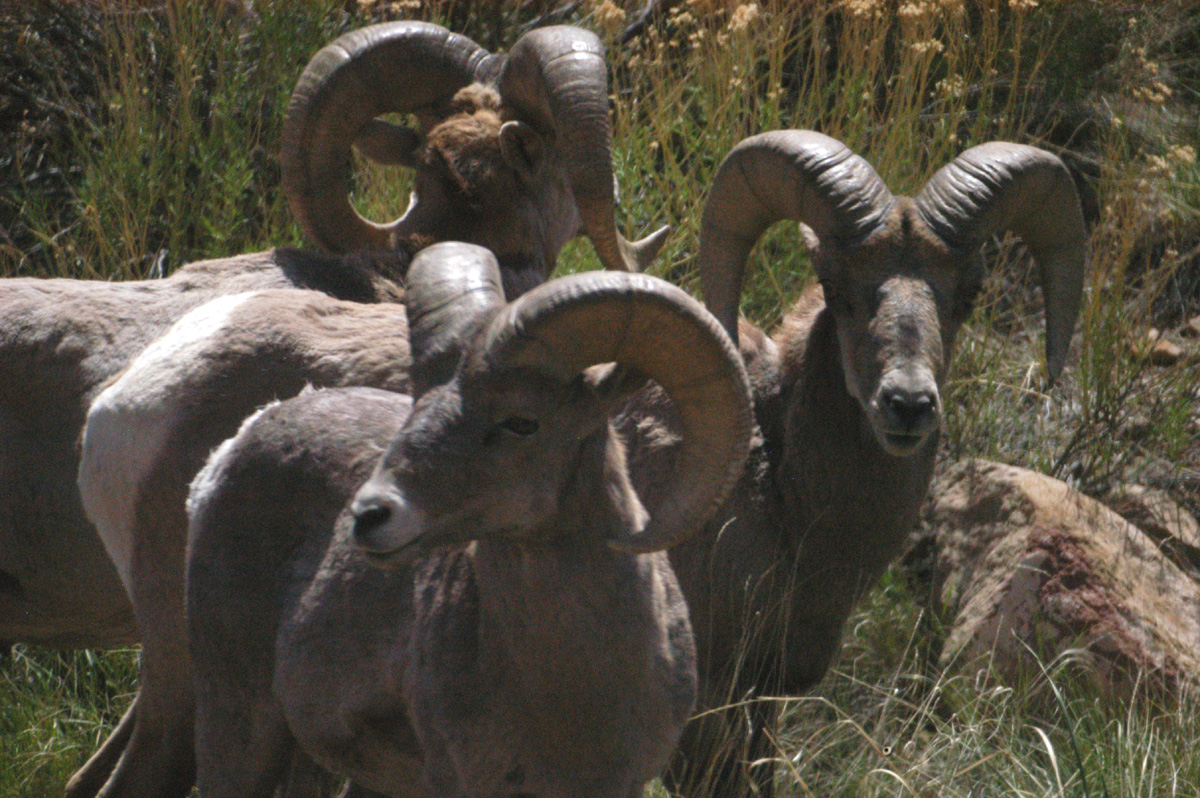


Big Horn Sheep
Once widespread throughout the western U.S., numbering in the millions, the Big Horn suffered rampant hunting, competition from domestic sheep, and disease, which brought their numbers down to a few thousand by the year 1900. Over the past century, they have made something of a comeback, although one sub-species has become extinct and one other is now listed as endangered. Bighorn Sheep are named for the large, curved horns borne by the males or rams. Femails or ewes, also have horns, but they are short with only a slight curvature. They range in color from light brown to grayish or dark, chocolate brown, with a white rump and lining on the back of all four legs. Rocky Mountain Bighorn females weigh up to 200 lb (90 kg), and males occasionally exceed 500 lb (230 kg). In contrast, Sierra Nevada Bighorn females weigh about 140 lb (60 kg) with males weighing around 200 lb (90 kg). Males' horns can weigh up to 30 lb (14 kg), as much as the rest of the bones in the male's body. Bighorn sheep graze on grasses and browse shrubs, particularly in fall and winter, and seek minerals at natural salt licks. Bighorns are well adapted to climbing steep terrain where they seek cover from predators such as coyotes, eagles, and cougars. They live in large herds, but do not have the strict dominance hierarchy of the mouflon: : that is, they do not automatically follow a single leader ram, unlike the Asiatic ancestors of the domestic sheep. Prior to the mating season or "rut", the rams attempt to establish a dominance hierarchy that determines access to ewes for mating. It is during the prerut period that most of the characteristic horn clashing occurs between rams, although this behavior may occur to a limited extent throughout the year. Ram's horns can frequently exhibit damage from repeated clashes. Bighorn ewes exhibit a six-month gestation. In temperate climates, the peak of the rut occurs in November with one, or rarely two, lambs being born in May. The lambs are then weaned when they reach 4-6 months.
I believe that the sheep we have here in Carbon County are Rocky Mountain Big Horns, although I have been told that another sub-species, Nelson's Big Horns, also seems to occupy this part of the U.S. The pictures shown below were taken near noon on May 13, 2009, along the shoulder of state highway 123, near the mouth of Whitmore Canyon, about 25 miles east of Price.
 |
 |
 |
Taken with the Nikon D-100 and a 500mm F:8 mirror lens. ISO 1600, and 1/2000 second exposure. |